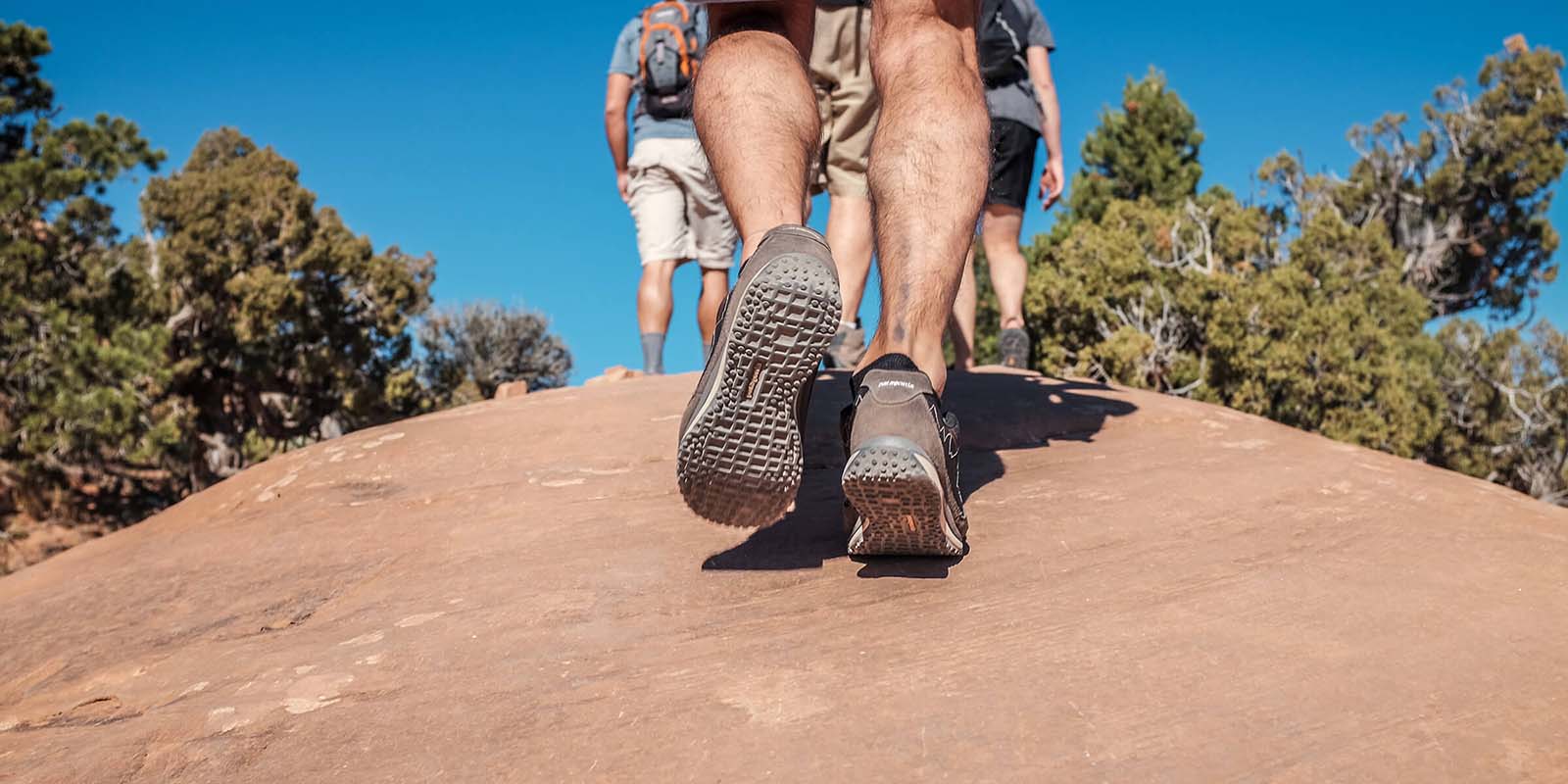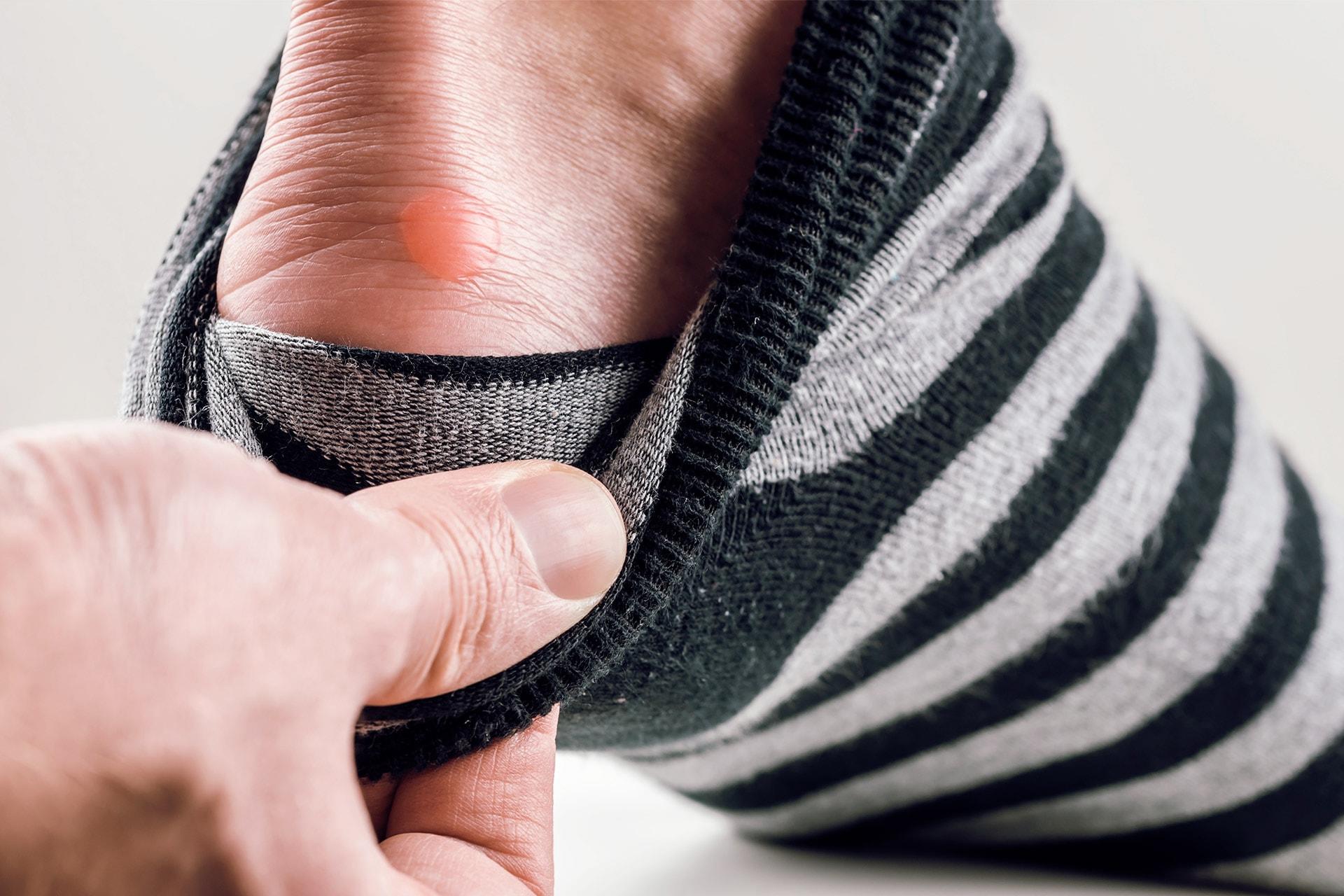Walking is a healthy form of exercise. It improves your fitness and causes few injuries. Nevertheless, even the most experienced walker cannot prevent blisters. That is why blisters are the number one foot problem among walkers.
How do blisters originate?
A blister is caused by friction or pressure and is a natural reaction of your skin to protect the underlying tissue. The protection comes from a build-up of fluid under the epidermis in the form of a fluid-filled blister.
6 tips for blister prevention
Unfortunately, it is impossible to completely avoid a blister. However, there are a number of tips that can reduce the risk of developing a blister.
- Make sure you have properly fitting shoes. Blisters are mainly caused by friction. Therefore, avoid shoes that are too wide. At the same time, some space for your toes is important, because shoes that are too tight also cause blisters. When trying on new hiking boots, remember that your feet swell a little when you walk. Also make sure that your socks fit, as poorly fitting socks or socks with seams can also cause blisters.
- Walk on your shoes before you start a long hike. Never walk very long distances with new shoes without walking on them before. Just like walking distances, build them up gradually. This does not automatically mean that you will not develop blisters, but it does reduce the risk.
- Use Care Plus® Anti Blister Spray every day, starting 3 weeks before a long walk. . By spraying your feet daily with this camphor-based foot spray, the skin becomes harder and the risk of blisters is reduced.
- Make sure your feet and socks are as dry as possible. Moisture and sweaty feet promote the development of blisters. Before and during the walk, dust your feet with foot powder. De Care Plus® Foot Powder absorbs moisture, dries the feet and helps prevent blisters.
- Preventively cover sensitive spots with blister plasters or tape. If your toes constantly rub against each other, you can opt for so-called toe spreaders.
- Take good care of your feet. Regularly remove any excess calluses and keep your nails short. Preferably wash your feet with cold water and no soap.
A blister, now what?
Generally, it is better to leave a closed blister closed and not puncture it. The accumulation of fluid protects the underlying tissue and the closed blister is also an excellent protection against infection. When the blister is punctured, dirt can get into the wound and cause it to inflame. It is better to cover the closed blister with a blister plaster. The Care Plus® blister plasters, available in 3 sizes, reduce pain and relieve pressure. Use a blister plaster on clean, grease-free and dry skin.
Necessary puncture of the blister
However, sometimes it is unavoidable to puncture a blister, for example if you still have a long distance to walk. After all, it is difficult to continue walking with a painful blister. When puncturing a blister, ensure that you work hygienically so that no dirt gets into the wound. Wash your hands well and disinfect the skin around the blister. Punch the blister with a sterile needle, as close to the skin as possible, i.e. at the side of the blister. Push out any excess fluid and disinfect the skin again. Then cover the area with a blister plaster to absorb the wound fluid and minimize the risk of infection from dirt in the wound.
Is the blister already open?
You cannot always prevent the blister from opening by itself while walking, for example due to friction. In this case, disinfect the wound and then cover the area with a blister plaster so that the wound fluid is absorbed.


